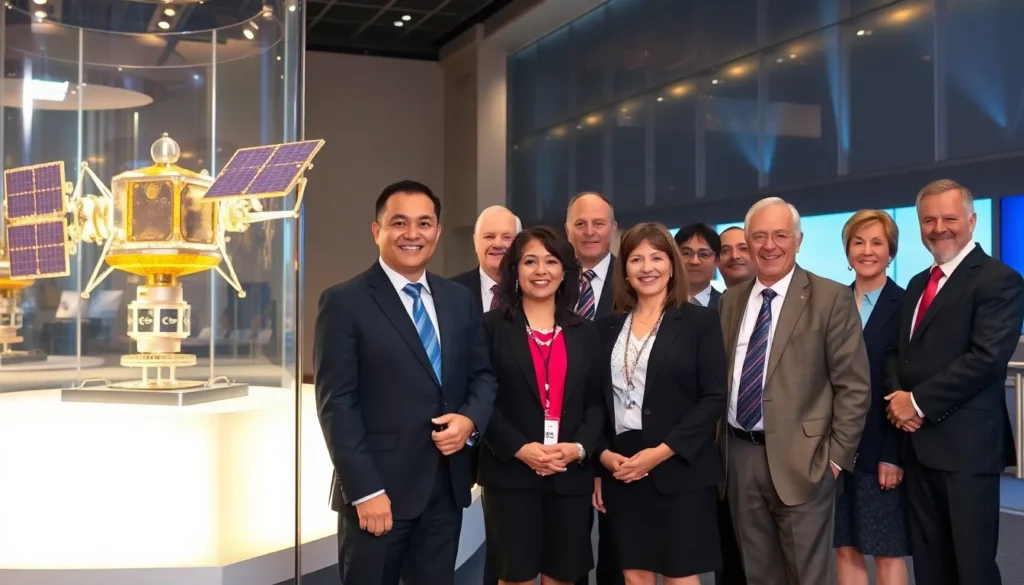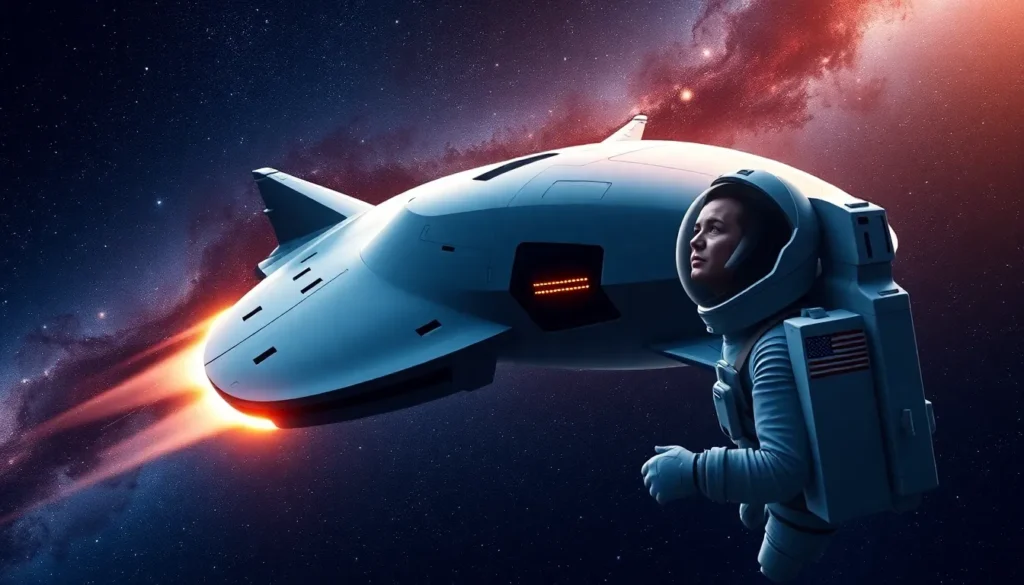Space: the final frontier, where technology takes a giant leap beyond Earth’s atmosphere. With each rocket launch, humans push the boundaries of innovation, turning science fiction into reality. From satellite communication that keeps us connected to the latest space explorations, technology is transforming how we view the universe and our place in it.
Table of Contents
ToggleOverview of Space Technology
Space technology encompasses various innovations that enable exploration, communication, and research beyond Earth. Satellites exemplify this, playing critical roles in global communication and weather forecasting. These devices orbit Earth, providing data that supports navigation, disaster management, and scientific research.
Rockets serve as the backbone of space transportation. Each launch showcases advancements in propulsion systems and materials, improving payload capacity and efficiency. Innovations such as reusable rockets lower costs and increase accessibility for future missions.
Robotic spacecraft represent another significant aspect of space technology. Rovers like NASA’s Perseverance and Ingenuity explore distant planets, gathering invaluable data about planetary conditions and potential for life. These robots perform tasks autonomously, allowing scientists to obtain information from environments challenging for human exploration.
Another prominent example involves the International Space Station (ISS), a collaborative effort among various nations. The ISS serves as a laboratory for conducting experiments in microgravity, fostering international cooperation in scientific research.
Space telescopes, such as the Hubble Space Telescope, contribute significantly to our understanding of the universe. They capture images of distant galaxies and celestial phenomena, expanding knowledge of cosmic events and the evolution of the cosmos.
Advancements in propulsion technology, including ion thrusters and solar sails, promise improved interplanetary travel. These methods aim to enhance fuel efficiency and reduce travel time between destinations in our solar system.
Overall, the landscape of space technology continues to evolve, driven by an insatiable curiosity to explore the unknown. Every innovation plays a role in shaping humanity’s future in space, bringing the dream of interstellar exploration closer to reality.
Types of Space Technology Examples

Space technology encompasses various innovations vital for exploration, communication, and research beyond Earth. Below are key examples of this technology.
Satellite Technology
Satellites play a crucial role in global communications. They facilitate television broadcasts, internet access, and phone services. Meteorology benefits significantly from satellites, which provide vital data for weather forecasting. Earth observation satellites collect images and data, aiding climate research and disaster management. Navigation satellites, such as the Global Positioning System (GPS), enhance location accuracy in everyday devices. Remote sensing technologies utilize satellites to monitor natural resources and environmental changes, impacting industries like agriculture and forestry.
Rocket Technology
Rockets represent a significant aspect of space transportation. They transport payloads into orbit, carrying satellites and scientific instruments. The development of reusable rocket systems has transformed the financial landscape of space missions, reducing launch costs significantly. SpaceX’s Falcon 9 set industry standards with its reusability. Advancements in propulsion technology, like ion propulsion, increase rocket efficiency and range. Launch vehicles, such as the Space Launch System (SLS), support deep space exploration missions. These rockets pave the way for future interplanetary travel and collaborations.
Space Exploration Technology
Space exploration technology encompasses a range of robotic and crewed vehicles. NASA’s Perseverance rover demonstrates autonomous exploration capabilities on Mars. Rovers analyze soil samples and search for signs of past life, contributing to our understanding of the planet. The Hubble Space Telescope significantly enhances astronomical research. It captures high-resolution images, allowing scientists to study distant galaxies and celestial phenomena. The International Space Station serves as a research laboratory, facilitating international collaborations in scientific experiments. These technologies collectively deepen humanity’s understanding of the universe.
Practical Applications of Space Technology
Space technology plays a crucial role in everyday life, impacting various sectors through innovative advancements. Below are key applications that demonstrate its significance.
Communication
Satellites significantly enhance global communication systems. They provide essential services such as television broadcasting, internet connectivity, and mobile networks. Organizations like Inmarsat and Intelsat deploy satellites to deliver high-speed internet to remote areas. Additionally, the Global Positioning System (GPS) relies on satellite technology to provide location-based services. The integration of satellite communication improves emergency response during natural disasters by allowing efficient communication channels for rescue operations. As demand for faster, more reliable communication grows, advancements in satellite technology continue to reshape how people connect.
Weather Forecasting
Weather forecasting benefits immensely from satellite technology. Meteorological satellites monitor atmospheric conditions, providing real-time data on temperature, humidity, and wind patterns. This information permits accurate weather predictions, vital for agriculture, transportation, and disaster management. For example, the National Oceanic and Atmospheric Administration (NOAA) utilizes satellites to track hurricanes and severe storms. Early warnings generated from satellite data save lives and property by helping communities prepare for adverse weather. The ongoing development of satellite systems enhances predictive capabilities, making forecasts increasingly precise.
Scientific Research
Scientific research relies heavily on advancements in space technology. Instruments aboard spaces telescopes, such as the Hubble Space Telescope, explore distant celestial bodies and gather critical data on the universe’s origins. Research expeditions to the International Space Station (ISS) facilitate studies on microgravity’s effects on biological systems. Researchers aboard the ISS conduct experiments that could lead to breakthroughs in fields like medicine and materials science. Furthermore, robotic spacecraft, like the Mars rover, contribute significantly to understanding planetary geology and potential habitability of other worlds. The integration of these technologies drives forward scientific exploration and knowledge.
Future Trends in Space Technology
Emerging trends in space technology demonstrate a significant shift towards more sustainable and efficient practices. Reusable launch systems are becoming more prevalent, with companies like SpaceX pushing boundaries while reducing costs. Continuous advancements in propulsion technology promise shorter travel times between celestial bodies, enhancing feasibility for missions to Mars and beyond.
Artificial intelligence is playing a pivotal role in space exploration. AI enhances the autonomous capabilities of robotic vehicles, enabling advanced decision-making during missions. Innovations in machine learning provide insights by analyzing vast amounts of data collected from space.
The integration of small satellites, or CubeSats, is revolutionizing the landscape of space observation. These compact devices offer affordable solutions for various applications, from Earth monitoring to deep-space research. Their scalability allows for expansive projects and collaboration among multiple agencies.
International collaboration is paramount for future missions. Joint ventures between countries yield shared expertise and resources, facilitating ambitious projects such as lunar bases and asteroid mining. The Artemis program exemplifies this collaboration, aiming for sustainable human presence on the Moon.
Manned spaceflight is entering a new era with private companies leading the charge. Efforts from firms like Blue Origin and Virgin Galactic are making space tourism a reality, allowing civilians to experience space travel firsthand. This trend increases public interest and investment in space-related projects.
Overall, trends indicate a push toward sustainability, collaboration, and enhanced technology, shaping the future of space exploration. Enhanced global connectivity will lead to greater opportunities for scientific discovery and inspire the next generation of space enthusiasts.
Space technology is at the forefront of innovation and exploration. As advancements continue to reshape how humanity interacts with the cosmos, the implications are profound. From enhancing global communication to revolutionizing scientific research, these technologies are integral to modern life.
The future promises even more exciting developments. With a focus on sustainability and collaboration, the next era of space exploration is set to inspire new generations. As private companies and international partnerships pave the way for ambitious projects, the possibilities seem limitless. The ongoing evolution of space technology not only expands our understanding of the universe but also enriches life on Earth.




